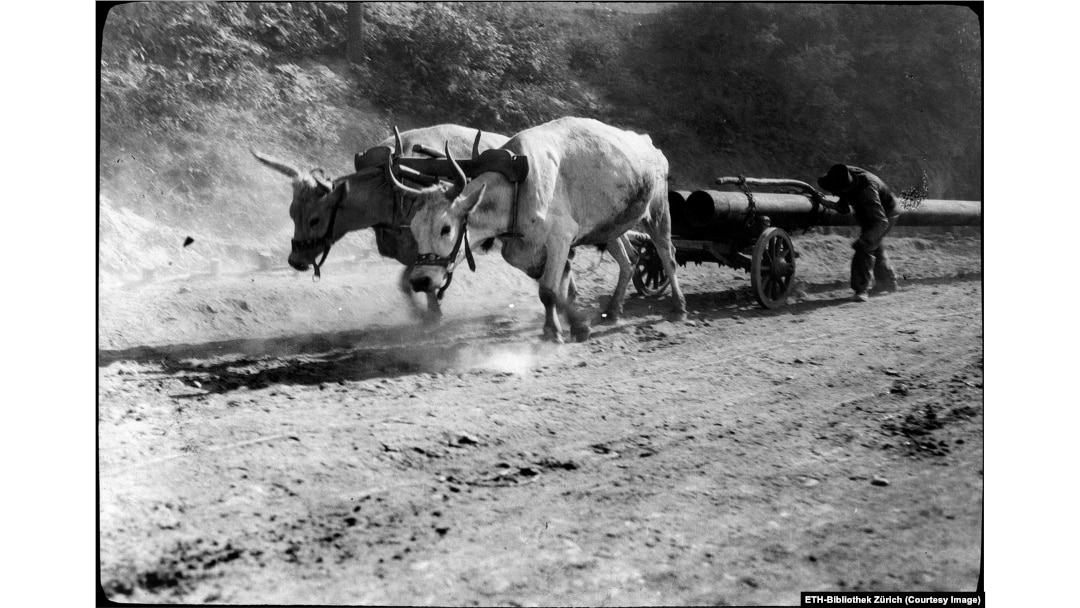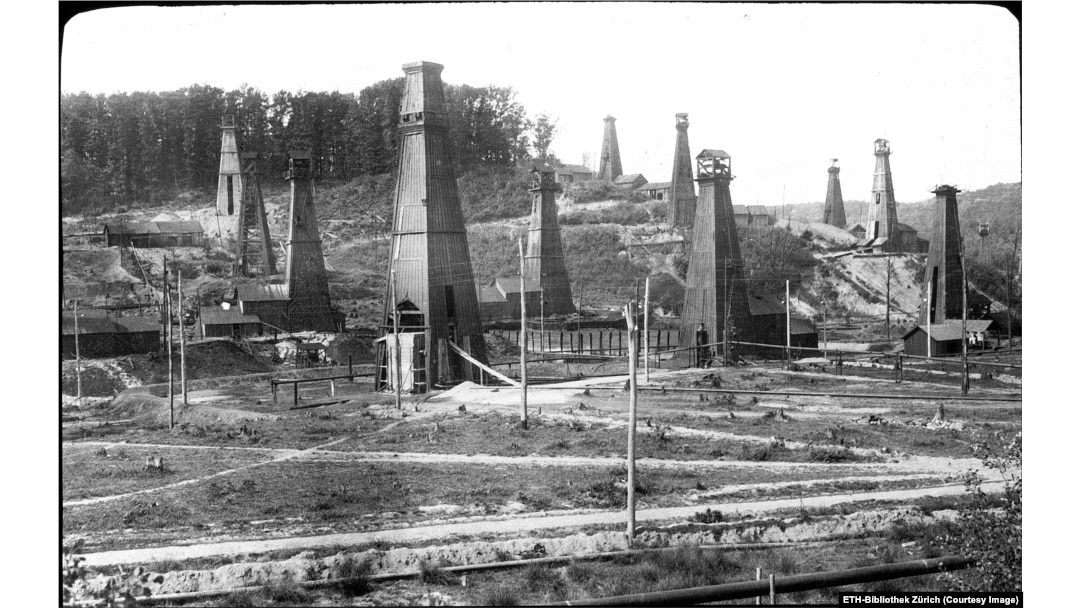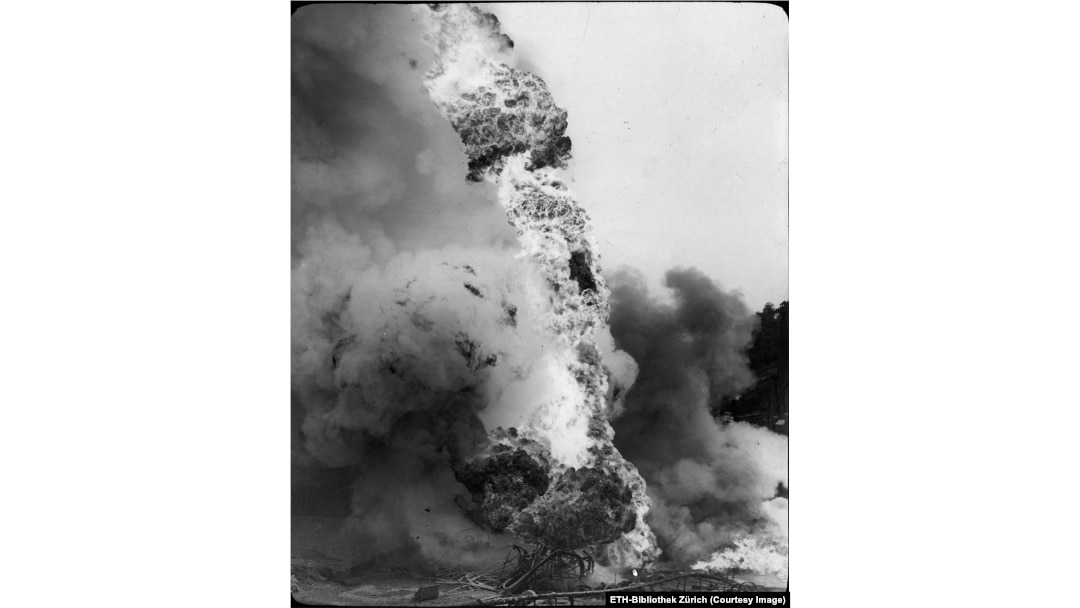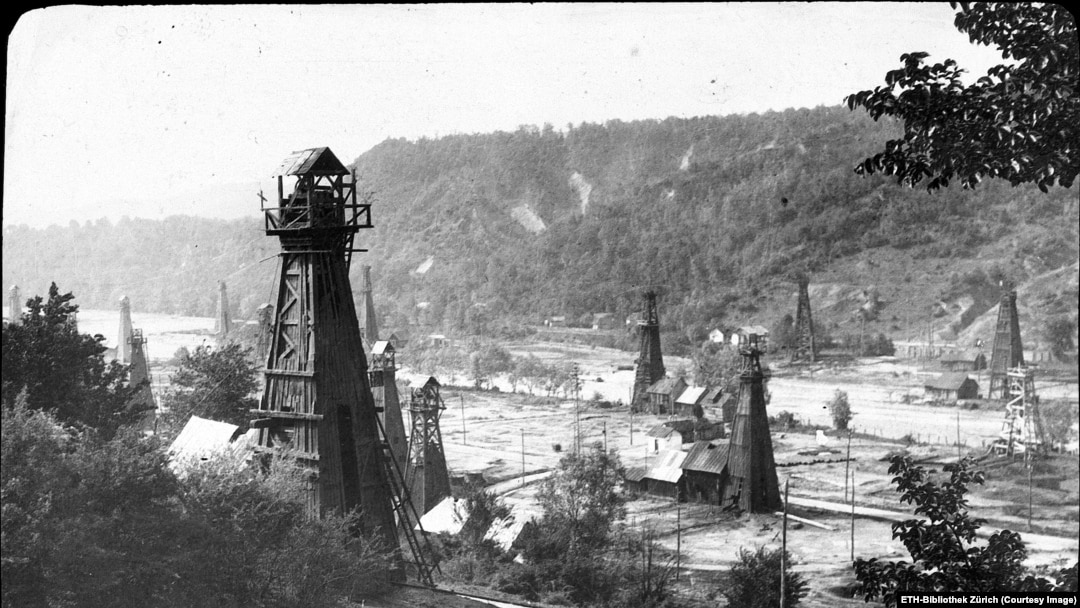Photographs held in a European archive capture the booming oil fields of Romania when the country was one of the world's largest producers of black gold.

Oxen haul lengths of steel piping for oil derricks along a road in Moreni.

Wooden derricks and well-worn pathways for workers in Ochiuri, near Moreni.

A fireball erupts from a well after a blowout in the Moreni oil field.
These are some of the photos held in the ETH Library in Zurich, Switzerland, that capture the oil fields of Romania in the 1920s and 1930s. They are some of the only images in existence showing the massive boom in oil production that lasted until the 1970s and made Romania a strategically vital objective in World War I and II.
A worker at the base of an oil derrick watches as a steam-powered rotary drill grinds through the rock beneath Aricesti.
Oil derricks in Campina, one of several oil fields around the city of Ploiesti
Romania's oil fields were mostly situated in the foothills of the Southern Carpathian Mountains just north of Bucharest.
Drilling mud, a material used to keep drill bits cool and unclogged, photographed at an oil field in Aricesti.
Derricks and an aboveground pipeline with arches for vehicles to pass under in Baicoi
In the early 1900s the Romanian oil fields attracted investors from the United States, Britain, the Netherlands, and other industrialized countries. Oil giant Royal Dutch Shell sourced nearly a fifth of its oil from the Romanian oil fields before World War I.
A worker and pools of drilling mud in Aricesti
A fenced-off gas well in Saros pe Tarnave in Transylvania
Romania also harnessed significant amounts of natural gas from its territories and became the first country in Europe to export the hard-to-handle resource.
Workers scoop out gloppy ladles of oil from a storage pool at an unidentified Romanian oil field.
An oil refinery in Aricesti
Industrial-scale oil production in Romania dates back to 1857, when the world's first systematic oil refinery began operation in Ploiesti. The early oil refiners used wood fires to begin the process of separating crude oil into different petroleum products.
A burning oil well in Moreni
Thanks to its abundant oil fields Romania was able to boast another world first when its capital city, Bucharest, was illuminated with hundreds of kerosene-fueled lanterns in 1857. The clean-burning kerosene replaced sooty, more expensive vegetable oils used up till then.
Workers with lengths of drill piping at the base of a derrick in Aricesti
During World War I, Romania destroyed hundreds of oil wells in an unsuccessful attempt to prevent them being used by advancing German and Austro-Hungarian forces.
Rail cars filled with Romanian oil ready for export in the port city of Constanta.
In World War II the massively expanded Romanian oil fields were a vital source of energy for the ships, tanks, airplanes, and submarines of the Nazi war machine. Romania was allied with the Nazis from 1940 until until 1944.
In a 1941 address, Nazi leader Adolf Hitler told the heads of his armed services "in the era of the air force, the Romanian oil fields can be turned into an expanse of smoking debris," adding, "the life of the [German-led military alliance] depends on those oil fields."
A U.S. B-24 bomber swoops above a burning oil refinery in Ploiesti in 1943.
In the summer of 1943, Allied forces launched an air raid on the Romanian oil fields around Ploiesti in an attempt to disrupt Hitler's war operations. The raid proved massively costly. Fifty-three aircraft and 660 air crewmen were lost and the operation had little impact on the output of the Romanian oil fields.
After World War II, oil production in Romania expanded until the 1970s, when wells began to run dry. Since then Romania's oil production has entered a steep decline and today the country imports most of the oil it consumes. An extensive refinery infrastructure still exists in the country thanks to its oil-soaked boom years.
With reporting by Eugen Tomiuc


